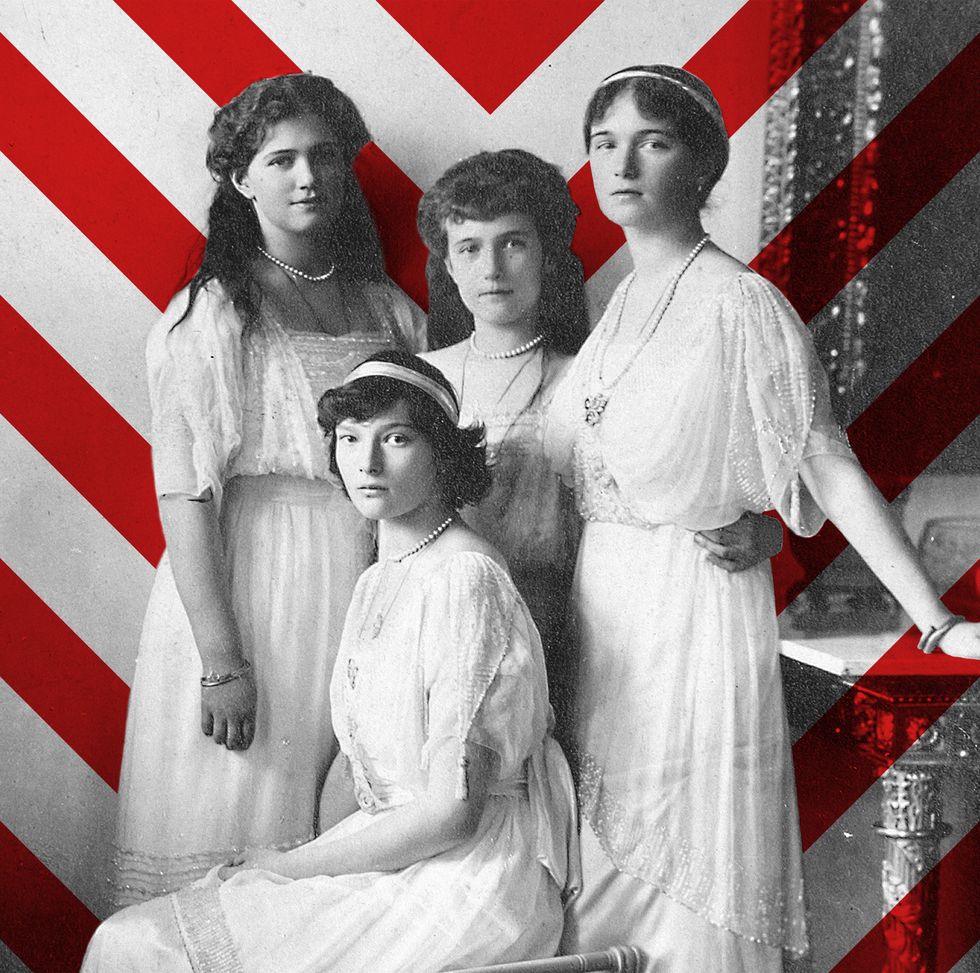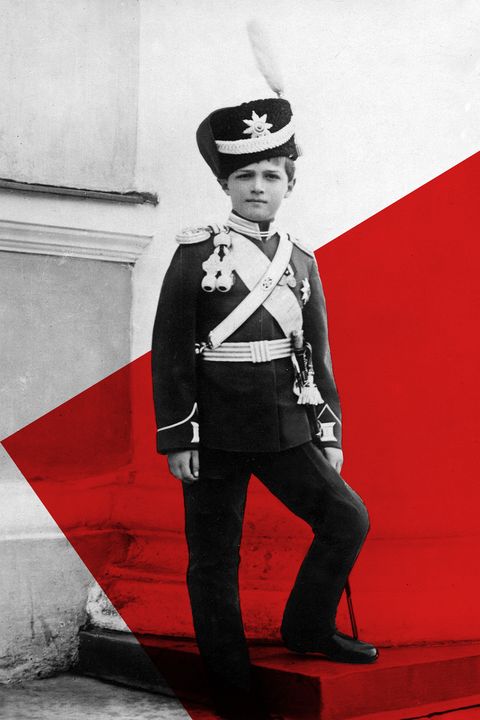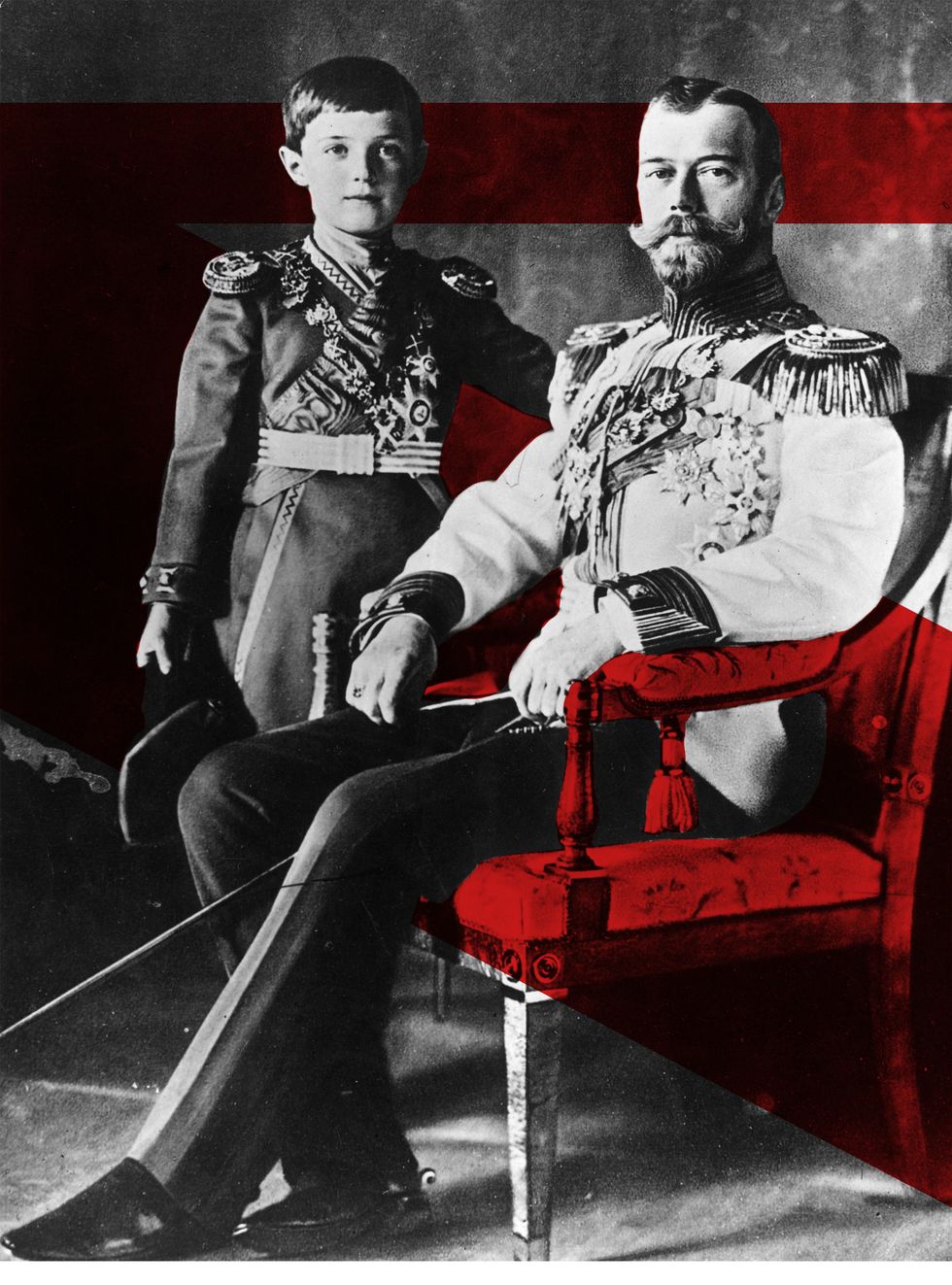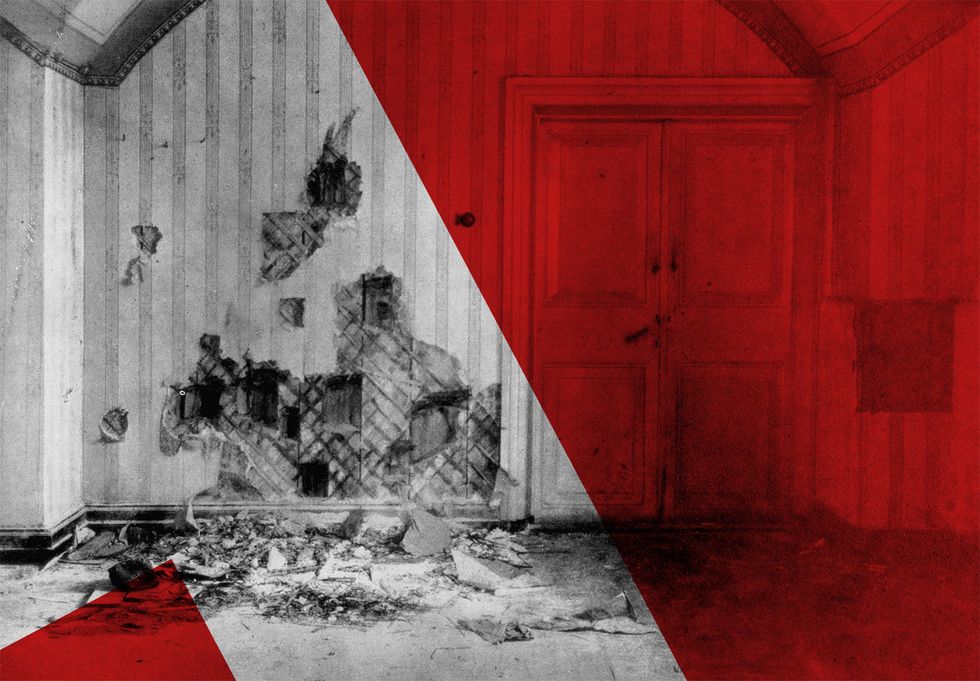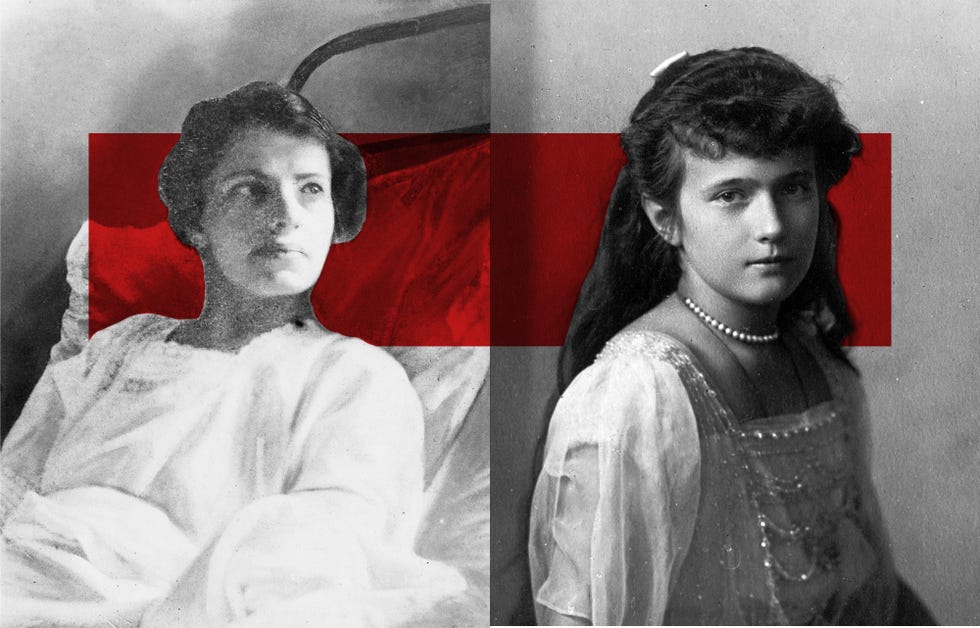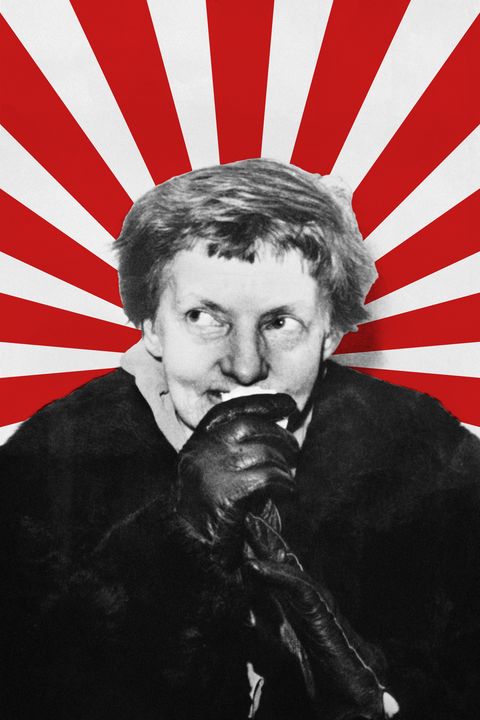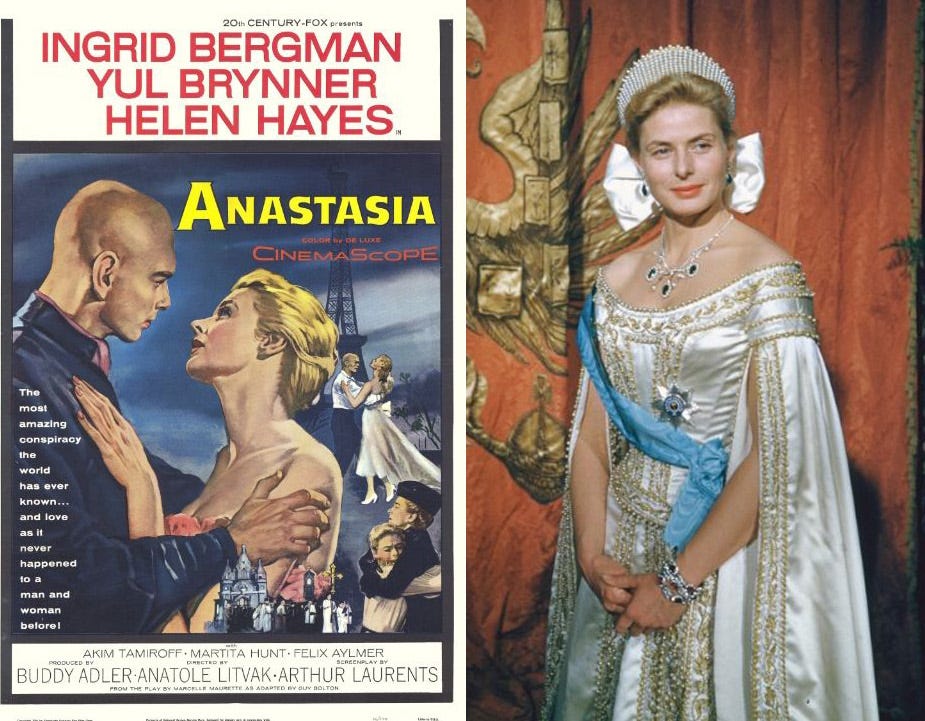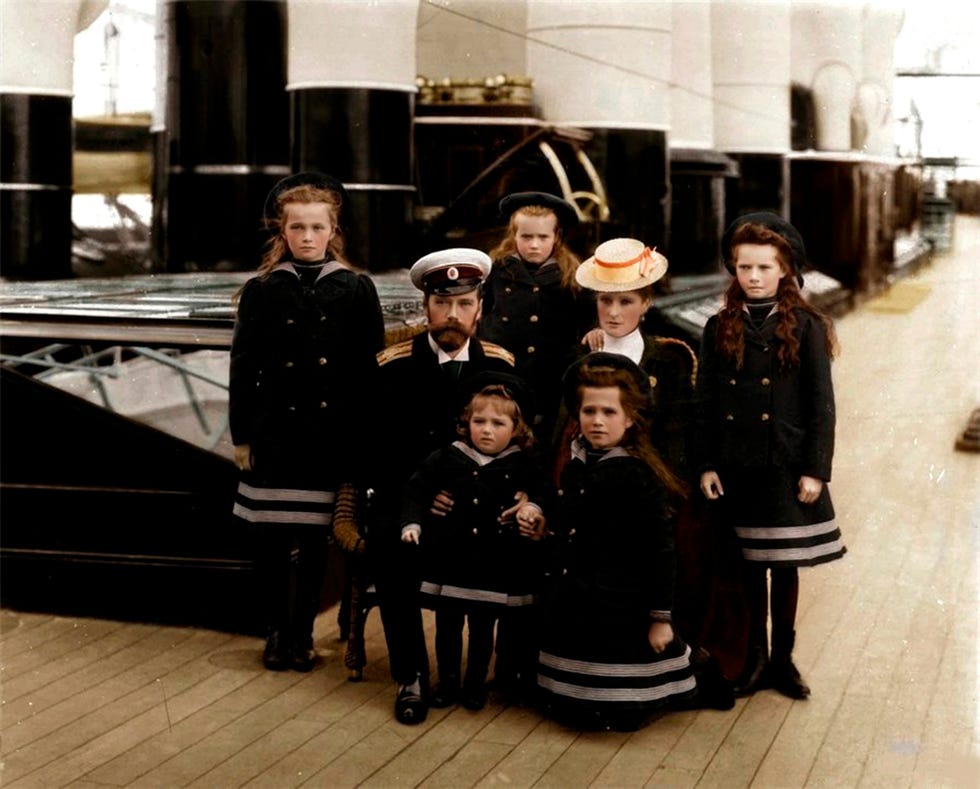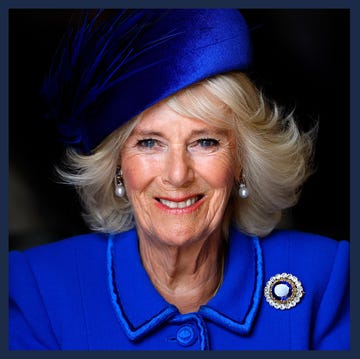“Somewhere down this road/I know someone's waiting/Years of dreams just can't be wrong!/Arms will open wide/I'll be safe and wanted/Finally home where I belong.” —"Journey to the Past," Anastasia
On July 17, 1918, Anastasia Romanov, holding her dog Jimmy, followed the family down the steps to the terrible cellar in Yekaterinburg, where they were told to wait. The White Army was nearing their location, desperate to free the czar. Suddenly the executioners strode in. The family and their servants, arrayed against the far wall, were gunned down by about a dozen men. Anastasia, who had just turned 17, was among the last to die, according to later testimony from the Bolshevik firing squad. Nor did the killers spare her pet. They crushed the dog’s head with a rifle butt and tossed him into the truck with the dead. The bodies of the family and their retainers were disfigured, mutilated, and either burned or buried in the forest.
But Anastasia refused to stay dead. Hearsay-fueled stories about her rumored survival, along with the many imposters purporting to be her—by some counts over 100 Anastasias have emerged—mean her tragic tale has morphed into a modern myth.
There have been blockbuster films, best-selling books, and theatrical productions, including the recently-opened Broadway musical Anastasia, inspired by the beloved 1997 animated movie. As far as Hollywood is concerned, Anastasia wasn’t shot or stabbed in a pitiless slaughter. Somehow she escaped.
“I think the legend of Anastasia has persisted for a century because we’re all romantics at heart, yearning for happy endings, especially in dark times,” says Lynn Ahrens, Tony-award-winning lyricist for Anastasia. “We want to imagine that the lost princess really did find ‘home, love, and family’ in the face of terrible odds.”
There are, of course, two versions of the story: one real, one fairytale. In the 1997 animated film, the cherished child of Russia’s ruling Romanovs is separated from her family and injured as they’re forced to flee St. Petersburg. Her memory lost, Anastasia ends up in an orphanage. Years later she joins forces with two kind-hearted con men seeking to reunite her with her grandmother, the Dowager Empress Marie, who’s offered a large reward for her return.
Follow Town & Country on Facebook!
The historical Anastasia is more interesting than the sweet, beautiful child who has been so mythologized. She was not the star of the family. Her birth was greeted with disappointment in the Russian court, and in the palaces of their European royal cousins, because of the country’s strict rule of male succession. “My God! What a disappointment! A fourth girl,” said Nicholas’s sister, Grand Duchess Xenia, at the time, according to Helen Rappaport’s book The Romanov Sisters.
Grand Duchess Anastasia Nikolaevna, born on June 18, 1901, was the youngest daughter of Czar Nicholas II, the last of the imperial Romanov rulers, and Czarina Alexandra, born a German princess. Anastasia was not a traditional Russian imperial name but derived from the Greek anastasia, meaning resurrection. “In naming her thus, the tsar and tsaritsa were perhaps expressing a profoundly held belief that God would answer their prayers and that the Russian monarchy might yet be resurrected, by the birth of a son,” wrote Rappaport.
Empress Alexandra’s next child was indeed a son, but one with hemophilia, which in the early 20th century meant the child was not likely to live to adulthood. The Tsarevich Alexei’s parents were consumed with fear for him and determined to keep his condition a secret from everyone. Alexandra, herself sickly, was shy and always reluctant to mix with Russian society. After the prince’s birth, the family lived almost like recluses, even though Romanov Empire covered one-sixth of the globe.
Despite the tense atmosphere inside the palace and the simmering violence outside (Russia had a near-revolution in 1905 before the one in 1917), Grand Duchess Anastasia grew into an energetic child. She was the shortest of the daughters and the least ethereal, with dark blonde hair and blue eyes. What everyone remarked on was her quickness and sense of humor. She loved mischief and playing tricks, not all of them nice. As Rappaport writes, Anastasia was known to trip people; her cousins complained she played too rough. Anastasia didn’t seem to care. She climbed trees and adored animals. She ate chocolates with her gloves on.
She was a brilliant mimic and shone in family theatricals. Anastasia disliked her lessons and showed little aptitude for grammar or spelling, but she was considered by some the most intelligent of the four daughters. When Nicholas was pressured to abdicate, chaos reigned throughout the country, and for a time he could not get back to his wife and children. Tsarina Alexandra tried to hide the disaster, saying their father was delayed. It was Anastasia who said, “But the train is never late.”
After the family was imprisoned, Anastasia did her best to keep everyone’s spirits up, although being denied outdoor activity must have been particularly hard on her. She sewed, read, and painted.
It is almost certainly true that Anastasia’s life ended shortly after in the city of Yekaterinburg, along with her parents, her sisters Olga, Tatiana, and Maria, her brother Alexei, and four family retainers. For decades, their unmarked graves were a closely guarded secret, until 1979, when the Romanov family remains were discovered in the forest and positively identified using DNA technology. Scientists believe the body of Anastasia is among those remains. But that did not put a stop to the widespread theories.
In 1920, a young woman was pulled out of a canal in Berlin, an attempted suicide. For months the woman refused to give her name or say much of anything. Transferred to an asylum, she was told one day by a fellow psychiatric patient that she looked like the Grand Duchess Tatiana, the second oldest daughter. Later, when it was clear that she was too short to be Tatiana, the other mental patients wondered if she was actually Grand Duchess Anastasia. The mysterious young woman did not discourage their assumptions, according to the book The Resurrection of the Romanovs: Anastasia, Anna Anderson, and the World’s Greatest Royal Mystery by Greg King.
While now this may seem laughably farfetched, it wasn’t so outlandish in 1920. In the years immediately after the Russian Revolution, it would not have been unusual for a young Russian woman to be found in Germany’s capital. So-called White Russian communities, noble and upper-crust refugees who had been stripped of wealth and position, huddled in Berlin and Paris. Those who fled the Bolsheviks by an eastern route settled in Shanghai, where young Russian women resorted to working as “taxi dancers”—paid dance partners—to feed their extended families.
Could one of these far-flung, desperate women be Grand Duchess Anastasia? Although it seems impossible that anyone could have escaped a Bolshevik firing squad with members handpicked for their willingness to kill the Romanovs, a great deal of uncertainty on who precisely died persisted for years.
Vladimir Lenin wanted it that way. The new government released the news that Nicholas II was dead, but would not confirm the executions of his wife and children. Kaiser Wilhelm and the Empress Alexandra were cousins—she was of the House of Hesse—and Wilhelm did not want her and her children harmed. Lenin had gained control of his country’s warring factions by pulling Russia out of the punishing war, and he did not want anything to harm that fragile peace. He played for time with the Germans by offering vague details and denials.
And so the rumors flew, ranging from guards rescuing one or two daughters to the Tsarevich Alexei being the one to escape. None of the claimants to be resurrected Romanov children, then or later, rivalled the fame of the woman in the German mental hospital, who took the name Anna Anderson. She explained the survival of “Anastasia” by saying one of the guards realized she was unconscious, not dead, while carrying her out of the cellar, according to The Resurrection of the Romanovs. The guard allegedly spirited her away and became her lover, only to die later in a street brawl.
As news of Anna Anderson’s claims spread, extended family of the Romanovs and former servants made their way to the hospital in Germany. Some said she resembled Anastasia, that the shape of her ears and feet was the same, that her eyes were as blue as the grand duchess’s, and that her mannerisms reminded them of the princess.
But others poked holes: Her mouth was too wide and other facial features were different. She didn’t recognize people she should have, and, most troubling, she didn’t speak Russian. Pierre Gilliard, the Romanov children’s tutor, said Anna Anderson was a “vulgar adventuress.”
To those family members who knew Anastasia best before 1918, Anna Anderson’s claims were a painful ordeal. The Dowager Empress Marie, grandmother of Anastasia, refused to meet with her. Although she never spoke publically of her family’s tragedy, it is believed that she accepted reports from people she trusted that the entire family was slain in Yekaterinburg. She never posted any reward. Anastasia’s aunt and Nicholas’s sister, the Grand Duchess Olga, visited Anderson in the hospital and afterward lamented, “I was looking at a stranger.” Empress Alexandra’s brother, Louis of Hesse, financed an investigation into his purported niece that concluded Anderson’s real identity was that of a mentally unstable Polish factory worker named Fraziska Schanzkowska.
Newspapers covered the “unveiling” of Anna Anderson’s identity and it was a scandal of its day. Yet some people persisted in believing that this young woman was Anastasia. Anderson lived on the charity of sympathetic monarchists in Germany and the United States, cycling in and out of mental hospitals until she married a Virginia genealogist named John Manahan, 18 years her junior. All the time she still insisted she was a Romanov princess.
In 1956, the film Anastasia was released to great acclaim. The storyline followed the life of Anna Anderson, a confused young woman, played by Ingrid Bergman, who was retrieved from a river in 1928 on the point of suicide. Then fiction takes over. Yul Brynner plays a charismatic White Russian con man living in Paris who backs her claims in hopes of collecting a huge reward. Helen Hayes, playing the Dowager Empress Marie, is eventually persuaded that her granddaughter survived. (This film was based on a French play, and the playwright’s heir is currently suing the producers of the Broadway show. The producers say the legal action is without merit. A judge declined to dismiss the suit at the end of January.)
Anastasia won Bergman an Academy Award for Best Actress; the film’s enduring fame spread the story of the “Romanov Pretender” to even more people. Distressed, Pierre Gilliard, a swiss academic who had worked as a tutor to Tsar Nicholas’s five children from 1905 to 1918, wrote a book called The False Anastasia, but it did nothing to halt the stream of other books and television shows supporting her claim.
A cornerstone of the myth of “Anastasia Returned” is the existence of the Romanov fortune, millions of rubles of gold sitting unclaimed at the Bank of England. This is just as much a fairy tale as anything else. Pulitzer Prize-winning author Robert K. Massie—whose serious 1969 biography, Nicholas and Alexandra, was made into an Oscar-winning 1971 film—settled the question of the fabled inheritance in his later book The Romanovs: The Final Chapter.
Massie wrote, “There is evidence that, during the First World War, Nicholas II brought home whatever private money he and his wife had in British banks and used it to pay for hospitals and hospital trains.” A London bank archivist is quoted as saying, “People keep asking. They will not take no for an answer. It’s frustrating. Listen, if there had been family money here, it would have come out long ago.”
The 1984 death of Anna Anderson in Charlottesville, Virginia, filled in some last pieces of the puzzle. After the bodies of Tsar Nicholas and his family were exhumed and identified in the 1990s, a subsequent DNA test proved Anderson had no relation to the Russian royal family. Medical tests linked her to the Polish worker Fraziska Schanzkowska, confirming the story that was broken in German newspapers decades earlier. For 63 years she had somehow managed to live another woman’s existence and in so doing inspired a play, a film, television depictions, novels, and now a musical.
Anna Anderson once said in English, “You either believe it or you don’t believe it. It doesn’t matter. In no anyway whatsoever.”
Emotions have always run high when it comes to the Romanov family. Some 50 blocks north of Manhattan’s theatre district is a Russian journey into the past of another kind. As much as a cathedral can be hidden, St. Nicholas Cathedral of the Russian Orthodox Church is tucked away on 97th Street, between Fifth and Madison avenues. The baroque facade with five onion-shaped domes is not on the route of the tourist buses, the ones that sway past St. Patrick’s Cathedral and St. John the Divine. Its visiting hours are unclear; if you call the phone number listed on the website, no one answers and no message clicks on. It will ring 20 times without an answer.
And yet, when you push open the heavy doors of St. Nicholas Cathedral, it brings you face to face with ravishing, soaring beauty. Lit by flickering candles and chandeliers, the space is filled with centuries-old religious relics, icons, paintings, and murals. The air hangs with incense so intense it almost smothers the delicate scent of the faded roses gathered in vases that dot the floor.
“It is not a museum, it’s a working church,” says an elegant young blond man lingering after services on a recent Sunday. He is a descendent of first-wave emigres, the ones who poured out of Russia in the chaos of the 1917 Revolution. Fiercely proud of the cathedral where he was baptized, the young man explains the stories behind several Orthodox saints, and points out a painting on the back wall of a crowned and robed man with a beard: Nicholas II, the father of Anastasia.
When the Russian community of New York City wanted to build a cathedral at the turn of the last century, the pious czar donated 7,500 rubles and urged others to contribute. A large wall plaque testifies to Czar Nicholas’s pivotal role in founding this church.
In the 21st century the cathedral has seen a resurgence. A plaque to another benefactor can be found on a wall of St. Nicholas: Vladimir Putin, the man dominating world news right now. He made his own donations and in 2001 quietly visited the 97th Street cathedral. After decades of government mandated-atheism and persecutions—a time when the Romanov royal family and aristocratic class were anathema—Russia has a president who supports the Orthodox faith and has promoted certain aspects of the country’s pre-Revolution history. In 2000, Nicholas, his wife, and children were sainted by the Russian Orthodox church. A survey of Russians at about the same time found that 30 percent of the population felt Czar Nicholas’s reign “brought more good than harm.”
The fascination extends far beyond Russia. When asked about his forthcoming series about the doomed family, Matthew Weiner told The Hollywood Reporter, “I love this idea that these characters believe themselves to be, whether they are or not, descendants of this last autocratic family who are part of one of the great true crime stories of all time.”
Why do the Romanovs have such a hold? Other powerful dynasties fell in the upheaval of World War One—the Hapsburgs, the Hohenzollerns—but no musicals have been made of their fates. It could be the shock of the execution, which surpassed in horror even the deaths of the French monarchs in the throes of the French revolution. After all, Louis XVI and Marie Antoinette were tried in a court before being guillotined, and their daughter was spared.
Perhaps we are forever caught up in our feelings for those young children, murdered in Siberian exile. Who knows what else they could have become if they made it out alive?

Nancy Bilyeau, a former staff editor at InStyle, Rolling Stone and Entertainment Weekly, has written a thriller set in the 18th century art and porcelain world titled 'The Blue.' For more information, see www.nancybilyeau.com.

